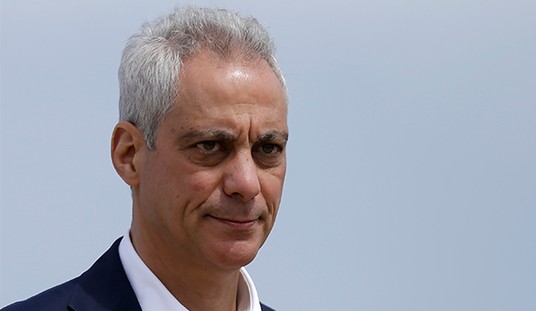How much will the new health care law cost? That was a matter of particular dispute during the debate of the Patient Protection and Affordability Act. The bill's authors monkeyed around with the numbers, delaying some benefits, creating new revenue raisers, and pushing off known, needed reforms, so that the Congressional Budget Office (CBO) could come up with a score below the $900 billion target.
Only the most naïve failed to recognize that those numbers were meaningless: Ultimately, they would have no relationship to how much the legislation would add to taxpayers' burdens and bloat the federal budget. CBO has since been revising its estimates upward: Another $115 billion for additional administrative costs associated with the new law. In addition, Congress now struggles to pass a change to the Medicare reimbursement rates, which will cost $23 billion just to patch the problem over for two years.

Taxpayers must be warned that these are just the first of many upward revisions by CBO. As Congressman Paul Ryan pointed out during the health care debate, the CBO score was based on ten years of increased taxes and Medicare cuts, and only six years of benefits. Former CBO Director Douglas Holtz-Eakin just released his own analysis of the law and found that, far from reducing the deficit as the President and Congressional proponents promised, the law will add more than $500 billion to the deficit during the first ten years and another $1.4 trillion in the decade after that.
Yet the program's cost for taxpayers are just a small part of the costs that will be borne by American citizens. Speaker Pelosi explained that only when the bill passed would Americans know what's in it, and she was right. Since the bill became law it's consequences for businesses and the medical system is becoming more obvious. Several large companies reported that they would suffer multi-million dollar losses due to the law's new taxes. Companies are also noting the incentives created by the law to drop insurance coverage for their employees. As Holtz-Eakin wrote: “Caterpillar recently noted that it could save 70 percent on health care costs by dropping coverage and paying the penalties; AT&T's $2.4 billion cost of coverage would drop to just $600 million for penalties.” Altogether, Holtz-Eakin estimates that as many as 35 million Americans could lose their employer-sponsored health insurance.
Recommended
So much for being able to keep your insurance. Americans are also learning how other provisions will drive up insurance costs. This year, “children” up to the age of twenty-six will become eligible for their parents' health insurance policy. Analysts estimate that this change will increase the cost of all family policies by about one percent.
One percent itself isn't a big deal, but it's a reminder of the relationship between mandated benefits and price. The federal government will soon foist numerous new mandates upon insurance companies: free preventive care services, an end to benefit caps, limits on price differentials for those with pre-existing conditions, and many more to come. Far from freebies, these are expensive benefits and their costs will be spread around the insured population, driving premium prices up.
The law also gives government new powers to dictate how much insurance companies operate. As a result, insurance companies will have to find new ways to make ends meet, such as by reducing payments to doctors. And those doctors will also find ways to trim back costs, by consolidating practices to reduce overhead and taking on fewer patients.
Americans need not wait for the federal law to fully take effect to understand what's in store. They can also look to Massachusetts, where a similar health care law is already in force. Health care policy expert Grace Marie Turner recently reviewed the problems that plague Massachusetts. Health care costs for a family of four in the Bay State are the highest in the nation, with per capita health care spending 27% higher than the rest of the nation. The increased demand for medical services has created a shortage of doctors, making it difficult to get an appointment and creating long wait times. Ironically this has led to increased use of emergency rooms, a problem that greater insurance coverage was supposed to solve. Insurance companies need to raise rates to cover additional expenses, but the Governor is threatening to cap rate hikes, which will leave private insurers operating at a loss. How long is that sustainable?
The debate about how much this new health care law will cost Americans is far from over. Undoubtedly, as more of the law is implemented, we will learn more about its many hidden costs and consequences. But one thing is for sure, this new law will cost more, and like much, much more than the law's proponents promised.

























Join the conversation as a VIP Member